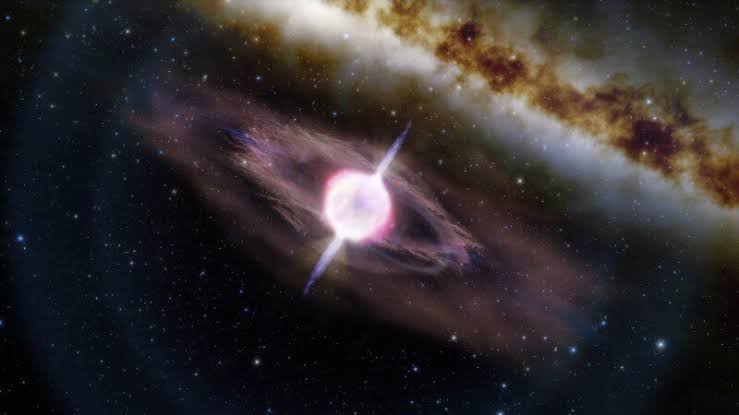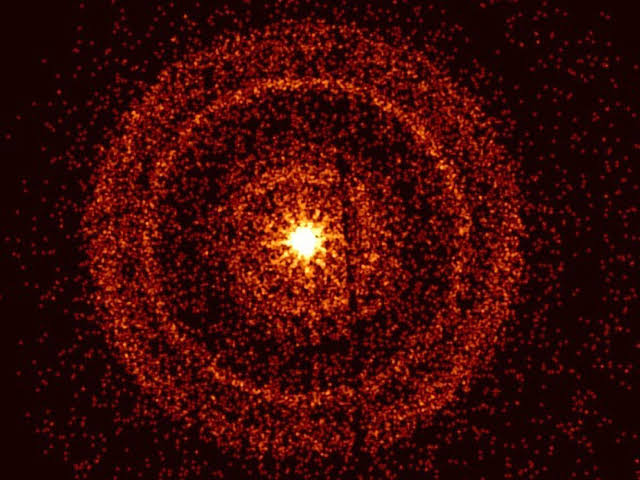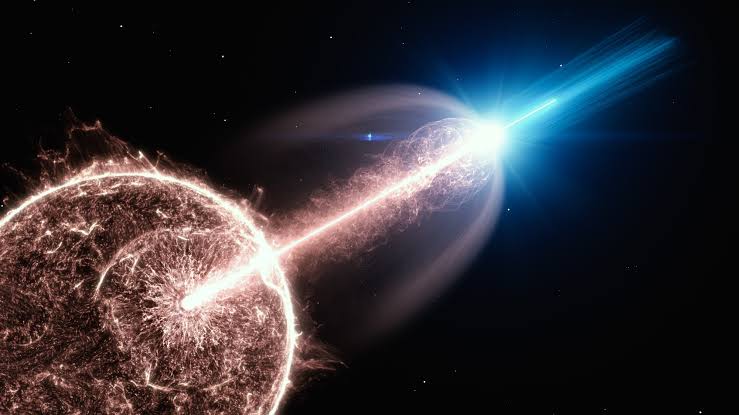The remarkable event that unfolded on 9 October 2022 captivated the attention of astronomers worldwide. NASA’s Swift satellite detected an extraordinary flash of high-intensity gamma-rays originating from a galaxy located 1.9 billion light-years away.
This celestial phenomenon, referred to as the “BOAT” or “brightest of all time,” was so powerful that it caused shockwaves to reverberate through Earth’s ionosphere. The discovery of this unprecedented gamma-ray burst (GRB) has provided scientists with a rare opportunity to delve into the heart of this astronomical spectacle and unravel its mysteries.

Unveiling the Extraordinary: The Birth of a Long GRB
1. A Glimpse into the Cosmic Cataclysm:
The BOAT, scientifically known as GRB 221009A, represents a long-duration GRB that lasts several minutes. These intense bursts of gamma rays typically occur when massive stars, ranging between 8 and 30 times the mass of our sun, meet their demise. As the star depletes its fuel, it undergoes a cataclysmic collapse, forming either a neutron star or a black hole.
During this process, the outer layers of the star collapse inward, forming a swirling disk of gas. Powerful magnetic fields then sweep up this material, emitting two ferocious jets of particles that travel close to the speed of light. The spiraling motion of charged particles along these magnetic fields releases gamma rays.

2. A Rare Proximity: A Unique Opportunity:
What makes GRB 221009A particularly intriguing is its relatively close proximity to Earth. This nearness has granted astronomers an unparalleled vantage point to study its central engine. The combination of its extraordinary brightness and close distance is so uncommon that experts estimate a recurrence of such an event to be once every 1,000 years on average.
Examining the Phenomenon: Opening Angles and Supernova Search
3. Illuminating the Jet’s Structure:
Observations conducted using the Gemini South telescope, operated by NSF’s NOIRLab, have shed light on the unique properties of GRB 221009A. In a study published in Science Advances, researchers investigated the “opening angle” of the GRB jet, providing valuable insights into the mechanism behind the emission of gamma rays.
The jet exhibited an unconventional shape, featuring a narrow core encompassed by wide, sloping wings. This configuration deviates from the norm, suggesting that these broad wings are exceptionally rare and potentially indicative of the most violent explosions.
4. The Elusive Supernova:
Another facet of the investigation focused on identifying the accompanying supernova, the visible light emitted during the stellar explosion. Led by Gokul Srinivasaragavan, a Ph.D. student at the University of Maryland, astronomers employed various telescopes, including Gemini South, the GROWTH-India Telescope, the Lowell Discovery Telescope, and the Liverpool Telescope. Their efforts yielded evidence of the supernova, which was subsequently named SN 2022xiw.
The Surprising Conclusion: A Supernova’s Lackluster Display
5. Unveiling the Unexpected:
Contrary to expectations, the analysis of supernova SN 2022xiw associated with GRB 221009A revealed an underwhelming display. Comparisons with previous studies of long gamma-ray bursts unveiled no discernible differences in terms of energy or brightness. This unexpected finding challenges the notion that a more powerful GRB would produce a correspondingly more energetic core-collapse supernova.
6. Mass Ejections and Astronomical Energy:
Despite the unremarkable nature of the supernova, calculations derived from its brightness provided astonishing insights. Researchers estimated that the stellar blast expelled between 3.5 and 11.1 solar masses of material. In a matter of seconds, the explosion propelled up to 11 times the mass of our sun into space, releasing more energy than the sun will generate throughout its entire lifetime.
7. A Gateway to Understanding:
The unparalleled level of detail observed during the study of GRB 221009A paves the way for a deeper understanding of the mechanisms underlying long GRBs originating from the deaths of massive stars. This extraordinary event may serve as a crucial reference point for future observations of ultra-luminous GRBs occurring at greater distances. The memory of GRB 221009A will endure within the astrophysical community as one of the most exhilarating events in recent history.
Conclusion: A Cosmic Spectacle Engraved in History
The astonishing gamma-ray burst known as GRB 221009A, with its overwhelming brightness and atypical jet structure, has captivated astronomers around the world. While the accompanying supernova turned out to be ordinary, the insights gained from this rare event have propelled scientific understanding forward. GRB 221009A will undoubtedly remain a milestone in the annals of astrophysics, continuing to inspire and fascinate researchers for years to come.
